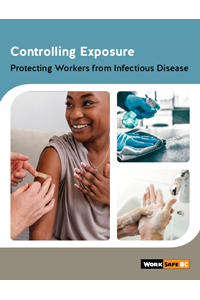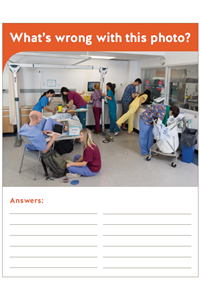Campylobacteriosis
Campylobacteriosis is mainly a food-borne illness caused by the Campylobacter bacterium, the most common cause of bacterial diarrhea among humans.
- The risks
- How to reduce the risk
- Resources
The risks
The bacteria can be present in undercooked poultry and spread through contaminated water. The bacteria can also be spread when feces from a pet or farm animal are passed on to humans from hand to mouth. On a farm, for example, a worker’s hands can become contaminated. If the worker then touches his or her lips, the bacteria can be ingested.
How to reduce the risk
If a worker or workers could be exposed to Campylobacter bacteria, the employer must develop and implement an exposure control plan (ECP). This plan must identify the workers at risk of exposure and the controls required to protect those workers. These will be unique to each worksite and work environment.
When choosing risk controls, consider the following questions.
-
1
Administrative controls
This type of control involves changing work practices and policies. Some questions to consider:
- Are hands being washed with soap and water after handling animals or animal feces?
- Are hands being washed before preparing food?
- Is an alcohol-based hand sanitizer provided where running water is not available?
- Has meat been cooked thoroughly to kill the bacteria?
- Are proper hygiene protocols in place?
- Have appropriate handwashing stations been set up?
-
2
Personal protective equipment (PPE)
This is the least effective type of control. When used, there must always be at least one other control in place as well. A key question to consider:
- Are gloves being used when handling animals?


